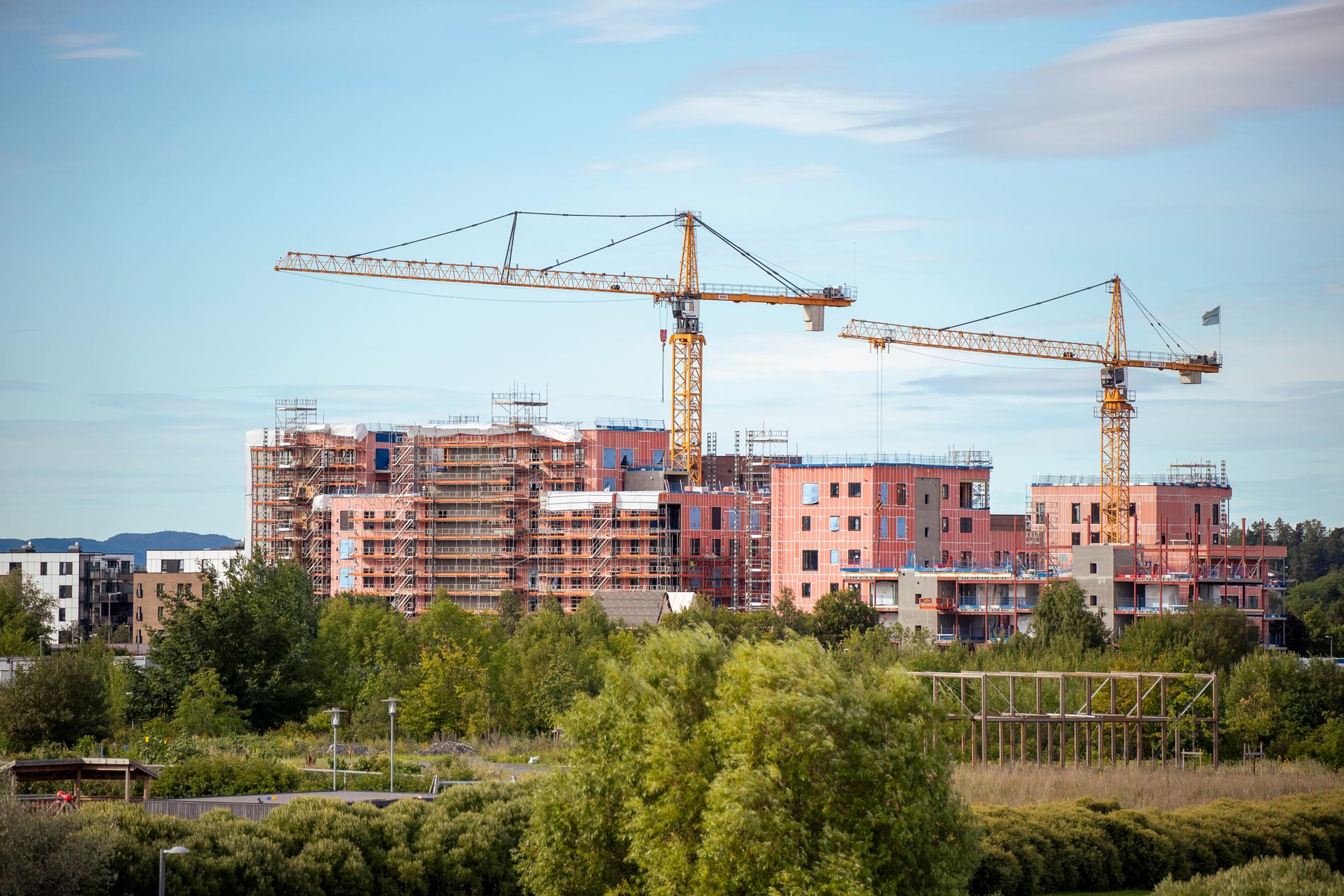Housing Permit Decline: Challenges To Construction Growth

Table of Contents
Economic Factors Contributing to Housing Permit Decline
Several intertwined economic factors are significantly impacting the number of housing permits issued. These challenges create a perfect storm, making it difficult for developers to secure financing and for consumers to afford new homes.
Rising Interest Rates and Mortgage Costs
The Federal Reserve's aggressive interest rate hikes have sent mortgage rates soaring. This has dramatically decreased affordability for potential homebuyers.
- Impact on Developers: Higher interest rates make it more expensive for developers to secure loans for new construction projects, leading to fewer projects being initiated and thus, fewer permits applied for.
- Buyer Hesitation: Increased mortgage payments make homeownership less accessible, reducing buyer demand and weakening the incentive for developers to build.
- Reduced Investment in New Construction: The combination of higher borrowing costs and reduced consumer demand creates a climate of uncertainty, causing investors to hesitate before committing to new housing developments.
Data shows a strong correlation between rising interest rates and a decrease in housing permit applications. For example, a 1% increase in mortgage rates is linked to a 5% decrease in new housing starts. This illustrates the significant impact of monetary policy on the construction industry.
Inflation and Material Costs
Soaring inflation has driven up the cost of construction materials significantly, squeezing profit margins and making projects less viable.
- Increased Project Costs: The price increases for lumber, concrete, steel, and other essential building materials have dramatically increased the overall cost of construction.
- Reduced Profit Margins: Developers are facing significant challenges in maintaining profitability given the escalating material costs. This makes new projects less attractive.
- Developer Reluctance to Start New Projects: The uncertainty surrounding future material prices makes developers hesitant to commit to new projects, leading to fewer permit applications.
The surge in lumber prices alone, for example, added thousands of dollars to the cost of an average new home, making them unaffordable for many. This is further exacerbated by ongoing supply chain issues impacting material availability.
Reduced Consumer Confidence and Buyer Demand
Economic uncertainty, including fears of a recession and job losses, is dampening consumer confidence and reducing buyer demand for new homes.
- Impact of Recessionary Fears: Concerns about job security and economic instability are causing many potential homebuyers to delay purchasing decisions.
- Job Security Concerns: Uncertainty in the job market leads to hesitation in making large financial commitments like buying a new home.
- Reduced Homebuyer Demand: Lower demand directly translates to fewer permits being requested by developers, as they are less inclined to begin projects without a guaranteed market.
Consumer sentiment indices directly reflect this trend, showing a clear decline in confidence correlated with a reduction in housing market activity and housing permit applications.
Regulatory and Bureaucratic Hurdles in Obtaining Housing Permits
Navigating the regulatory landscape to obtain housing permits can be a complex and time-consuming process, further contributing to the decline.
Lengthy Permitting Processes and Delays
The often cumbersome and lengthy permitting processes pose a significant barrier to new construction.
- Excessive Paperwork: The sheer volume of paperwork and bureaucratic procedures required to obtain permits often leads to delays.
- Bureaucratic Bottlenecks: Inefficient bureaucratic processes and lack of coordination between various agencies can further prolong the permitting process.
- Lack of Transparency in the Process: A lack of transparency and clarity in the permitting process creates uncertainty and frustration for developers.
Streamlining permitting processes, such as those implemented in some cities that utilize online portals and automated review systems, has proven effective in reducing delays and expediting approvals.
Complex Zoning Regulations and Land Use Restrictions
Strict zoning regulations and land use restrictions limit development opportunities and reduce the number of permits issued.
- Density Restrictions: Limits on housing density restrict the number of units that can be built on a given piece of land, limiting supply.
- Height Limits: Restrictions on building height can impact the feasibility and profitability of projects.
- Parking Requirements: Mandated parking minimums can significantly increase project costs and reduce the number of units that can be built.
- Environmental Regulations: While crucial for environmental protection, stringent environmental regulations can add complexities and delays to the permitting process.
Reforming zoning laws to allow for higher-density housing, such as through the adoption of mixed-use developments and the relaxation of certain parking requirements, can help alleviate the housing shortage.
Lack of Skilled Labor and Construction Workers
A shortage of skilled labor in the construction industry contributes to delays and reduced permit applications.
- Increased Construction Costs: The scarcity of skilled workers drives up labor costs, adding to the overall expense of projects.
- Impact on Project Timelines: Labor shortages can lead to significant delays in project completion, impacting the overall feasibility of developments.
Investing in vocational training programs and apprenticeships can help address the skills gap and provide a more robust workforce for the construction industry.
Environmental Concerns and Sustainability Regulations
While crucial for environmental protection, stricter environmental regulations and considerations can also contribute to delays and complexities in obtaining permits.
Environmental Impact Assessments and Approvals
The increasing focus on environmental sustainability means more extensive environmental impact assessments are needed before permits are granted.
- Time-consuming Environmental Impact Studies: Conducting thorough environmental impact studies can be a lengthy and expensive process, delaying project timelines.
- Stricter Regulations for Sustainable Building Practices: Regulations promoting sustainable building practices, while important, can add complexity to the design and construction process.
However, it's important to note that these regulations are essential for long-term environmental protection and contribute to creating more sustainable and resilient communities.
Constraints on Development in Sensitive Areas
Restrictions on development in environmentally sensitive areas limit the availability of land for construction.
- Limited Developable Land: Protecting environmentally sensitive areas reduces the amount of land available for development, increasing competition for available plots.
- Increased Competition for Available Plots: This increased competition can drive up land prices, further impacting the feasibility of projects.
Finding a balance between development needs and environmental protection is crucial, requiring innovative solutions such as brownfield redevelopment and the development of sustainable building techniques for environmentally sensitive areas.
Conclusion: Addressing the Housing Permit Decline for Sustainable Construction Growth
The decline in housing permits is a complex issue stemming from a combination of economic headwinds, regulatory hurdles, and environmental considerations. This decline has significant consequences for construction growth and the broader economy, exacerbating the housing shortage.
To address this challenge, a multi-pronged approach is needed. This includes: streamlining permitting processes to reduce delays, implementing policies to improve housing affordability by addressing interest rates and material costs, investing in workforce development to address the skilled labor shortage, and fostering the adoption of sustainable building practices that balance environmental protection with development needs.
We need a collaborative effort between government agencies, developers, builders, and community stakeholders to find effective solutions to the housing permit decline. Engaging in discussions, advocating for policy changes, and supporting initiatives aimed at streamlining permitting and promoting sustainable construction are vital steps in revitalizing the housing sector and addressing the urgent need for more affordable and sustainable housing. We urge you to explore further research on sustainable building practices and engage with relevant organizations working to address the housing shortage. Let's work together to overcome this housing permit decline.

Featured Posts
-
 Pelni Km Lambelu Informasi Jadwal Terbaru Nunukan Makassar Juni 2025
May 28, 2025
Pelni Km Lambelu Informasi Jadwal Terbaru Nunukan Makassar Juni 2025
May 28, 2025 -
 Marlins Kyle Stowers The Impact Of Journaling On His Performance
May 28, 2025
Marlins Kyle Stowers The Impact Of Journaling On His Performance
May 28, 2025 -
 The Latest Nicolas Anelka News Match Results And Media
May 28, 2025
The Latest Nicolas Anelka News Match Results And Media
May 28, 2025 -
 Following Split Claims Kanye West And Bianca Censori Enjoy Dinner Date In Spain
May 28, 2025
Following Split Claims Kanye West And Bianca Censori Enjoy Dinner Date In Spain
May 28, 2025 -
 Arsenal Transfer Target Striker Prefers Gunners Despite Tottenhams 58m Bid
May 28, 2025
Arsenal Transfer Target Striker Prefers Gunners Despite Tottenhams 58m Bid
May 28, 2025
